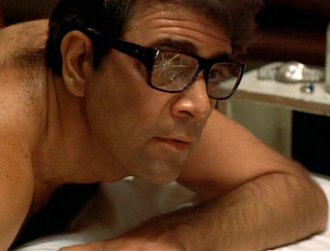For this writer, the undignified afterlife of the American gangster movie has been frustrating to watch. Like James Cagney at the end of The Public Enemy, the genre appears to have been fatally wounded, wrapped up in bandages like an American mummy, and tossed upon its doorstep. Sure, there are decent, even good gangster films made in the United States from time to time, and there are great films that feature gangsters as characters in them, but as a genre, the American gangster movie is functionally shut down, a relic from an older time.
How did this come to be? How did a genre as American and as cinematic as the Western (another relic, perhaps) go from feeling modern and alive to being an unnecessary exercise in nostalgia?
While I’m not sure of the answer to that question, I intend to get closer to the truth. Because I love gangster movies. If Goodfellas comes on TV, I have to watch the whole thing. The Godfather trilogy helped kickstart my cinephilia as a preteen just getting into film. When I post online, I do so with my personal avatar of Paul Muni in the original Scarface. They speak to me — I who has never committed a crime worse than some illegal music downloads in middle school. Why is that?
Once again, these are questions I don’t have the answers to. Yet. But maybe in time I will have them.
This is why I am announcing a new series presented by yours truly: American Underworld — The Life and Death of the Gangster Movie.
With a reasonable caution of counting my chickens before they hatch, I will say now that these installments will come, most likely irregularly, when I get the time to write them, which is not always easy, considering I have a job and grad school to prepare for. If you know an eccentric billionaire willing to fund a young man’s aspirations towards critical prominence, please let me know.
But getting back to the point, the objective of this series will be to determine what it is that makes American gangster films essential to the corpus of motion pictures, and to the American consciousness at large, as well as pinpointing the collective characteristic of the genre, and why this type of movie lost its way. Each installment will cover a different film in the genre (or perhaps 2 or 3) in chronological order, going from the Oldest of Old Hollywood all the way up to today.
Consider this to be part review, part genre analysis, part cultural criticism, and a whole lot of talking about Tommy Guns.
So what is a gangster movie?
For the purposes of this series, I will be defining it as a movie whose central protagonist is regularly and professionally engaged in organized crime, and whose plot primarily deals with those crimes, and their effect on the gangster’s personal life.
This does not include films about cops investigating gangster, films about “civilians” getting involved with gangsters, films about unorganized criminals, or films about “respectable” businesspeople or politicians who involve themselves with organized crime while presenting a legitimate facade. Those types of movie are all related, but ultimately have different aims and executions.
Instead, the gangster movie is principally concerned with the place of the figure of the Gangster and his or her role in the Underworld. The Gangster, paradoxically, is someone whose very existence is both antithetical and essential to society. To make a living through organized crime — whether it be bootlegging liquor, dealing heroin, or protection rackets — is to flaunt one’s defiance of social order whilst buying into the benefits of a society. It both negates and propagates our agreed upon conception of community.
To commit a crime, as the Gangster does as a vocation, is to choose to live outside the borders of society, yet the Gangster denies himself none of the trappings of societal success. In an ideologist’s view of law and order, law upholds civilization while the choice to outlaw oneself undermines it.
Yet as a film like Martin Scorsese’s Gangs of New York points out, our society is built just as much in the streets as in the capitols, as much in the whorehouse as in the courthouses. “We was all born of blood and tribulation,” preaches one character in that film, and it is true — the outlaws and mobsters and gangsters of the world build the laws of society in the same way the politicians do.
They are the Underworld.
The world that is a twisted mirror image of the “respectable” front for society; a world that is governed by as many rules and regulations as the “world above,” and a world that is as complex and dynamic and interconnected as the world of respectable society. The Underworld cannot be separate from the World Above, for it gives it meaning and purpose, yet the Underworld remains marginalized and kept to the shadows. And the Underworld prefers it there.
Let’s take the Underworld out of the shadow for a bit, and reveal it to the light.

